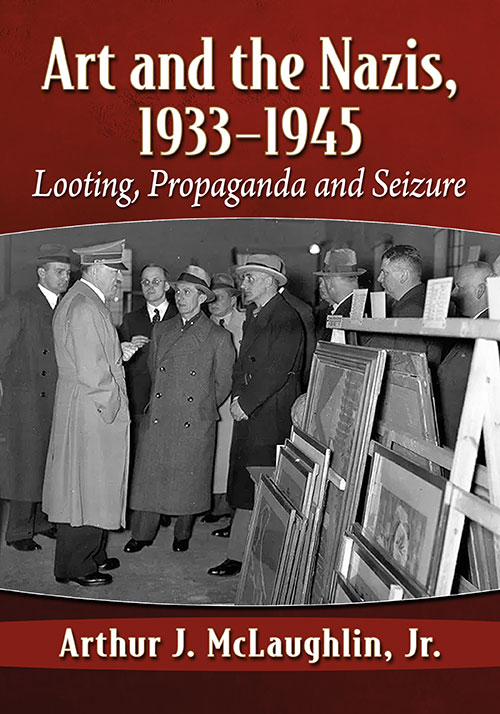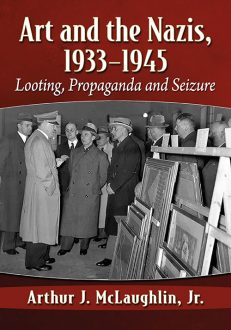Art and the Nazis, 1933–1945
Looting, Propaganda and Seizure
$39.95
In stock
About the Book
This first comprehensive analysis of the Third Reich’s efforts to confiscate, loot, censor and influence art begins with a brief history of the looting of artworks in Western history. The artistic backgrounds of Adolf Hitler and Hermann Göring are examined, along with the various Nazi art looting organizations, and Nazi endeavors to both censor and manipulate the arts for propaganda purposes.
Long-held beliefs about the Nazi destruction of “degenerate art” are examined, drawing on recently developed university databases, new translations of original documents and recently discovered information. Theft and destruction of artworks by the Allies and looting by Soviet trophy brigades are also documented.
About the Author(s)
Bibliographic Details
Arthur J. McLaughlin, Jr.
Format: softcover (7 x 10)
Pages: 228
Bibliographic Info: 23 photos, appendix, notes, bibliography, index
Copyright Date: 2022
pISBN: 978-1-4766-6641-9
eISBN: 978-1-4766-4483-7
Imprint: McFarland
Table of Contents
Preface 1
1. The History of the Looting of Art in Western History 3
2. The Background for Nazi Looting of Art 12
3. Art Curators Prepare for War 18
4. The Monuments, Fine Arts, and Archives Organization 33
5. Adolf Hitler’s Interest in Art 43
6. Hermann Göring’s Interest in Art and the van Meegeren Fake 58
7. Nazi Looting Organizations and the Führermuseum 76
8. “Degenerate Art” and the Exhibition 88
9. Paris, the Jeu de Paume, and Rose Valland 103
10. Nazi Propaganda in the Visual Arts 116
11. Nazi Propaganda in Films 131
12. The Special Instance of Italy 147
13. The Allies Begin Returning Art and the Soviets’ Trophy Brigades 162
14. The Allied Seizure, Theft, and Destruction of Art 172
Epilogue 183
Appendix: The Disaster at Flakturm Friedrichshain: A Chronicle and a List of Paintings 185
Chapter Notes 197
Bibliography 201
Index 205
Book Reviews & Awards
“Meticulously researched… Engaging… Art and the Nazis is a truly masterful work written in an engaging manner. In 220 pages, McLaughlin invites us to contemplate and understand human behavior and the power of art.”—Israel Journal of Foreign Affairs





